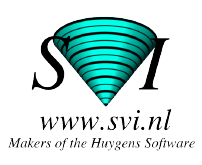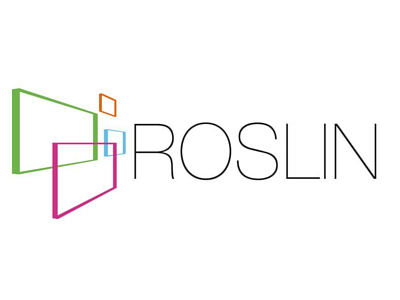All over Scotland

Welcome to the Scottish Microscopy Society FACILITIES Database, where you can find the right open-access facility for your research needs.
Promote microscopy research & facilities in Scotland
Inform on new technologies and funding prospects
Connect microscopy developers & researchers
Inspire collaboration across disciplines and institutions
SEARCH THE DATABASE
Search criteria
Search RESULTS
Aberdeen Centre for Electron Microscopy, Analysis and Characterisation
ACEMAC runs a GeminiSEM 300 high resolution Field Emission Scanning Electron Microscope. SE, BSE and cathodoluminescence detectors can be operated in both high vacuum and variable pressure modes, enabling imaging of sample types from steel to rocks to biological cells (down to 0.8 nm). EDS, crystal structures and orientation/strain analysis (EBSD) are also performed.
Aberdeen Microscopy and Histology Core Facility
The Microscopy and Histology facility has many years’ experience in Histology (wax, cryostat and resin) and Light, Fluorescence, Confocal along with MicroCT and also Electron Microscopy. Light microscopes include upright and inverted confocal, spinning disk confocal, widefield, phase holographic and slide scanner system with timelapse, multiposition, Class II live pathogen capabilities. Electron microscopes include SEM and TEM with tomographic capabilities, plus high pressure freezer and freeze substitution and microwave processor.
Advanced Imaging Resource
AIR supports imaging ranging from model organisms through to sub cellular structures utilising cutting edge imaging tools and technologies, and works together with ESRIC to provide access to super-resolution optical imaging platforms. Microscopes include confocal, spinning disk confocal, multiphoton, SIM, STORM, OPT, widefield and high content imaging systems, with dedicated image analysis specialist support available.
Advanced Materials Research Laboratory
The AMRL consists of two testing laboratories: materials characterisation/analysis and mechanical testing. The centre can conduct research and testing from all sectors of engineering and can offer nano-scale characterisation through to full-scale component testing. Microscopes include SEMs with EDS and WDS analysis and EBSD capabilities, and light microscopes with Dark-field, polarized light and DIC.
Beatson Advanced Imaging Resource
BAIR have a wide range of specialised microscopes that provide users with the flexibility to approach their research using a diverse range of applications. Microscopes include a variety of confocal and widefield systems, super-resolution systems, high-content screening, in vivo imaging systems, and equipment for advanced techniques such as TIRF, FLIM/FRET and Multiphoton imaging.
Bioimaging & Flow Cytometry Facility
The Bioimaging and Flow Cytometry Facility incorporates all of the Institute’s high-end microscopy, cell sorting and flow cytometry equipment. Microscopes include upright and inverted multiphoton, confocal and widefield with SHG, phase contrast, DIC, timelapse, multiposition and Class II live pathogen imaging capabilities available.
Centre of Biophotonics
Some of CoB’s light microscopes are commercial
instruments but a significant number of them are innovative techniques developed by groups within the Centre, and therefore, are custom-built setups. Nano- and micro-fabrication techniques within a cleanroom environment and ultrafast techniques including
femtosecond spectroscopy, fluorescence up-conversion
and transient-absorption spectroscopy are available
along with image processing workstations.
CESEM
CESEM has two scanning electron microscopes: an XL30 ESEM with LaB6 filament, and a Quanta 650 FEG SEM. Both are equipped with a range of detectors and stages, including EDX, backscattered, charge contrast, wettabiliity and cathodoluminescence imaging capabilities, and are ideally suited for a wide range of investigations. Low vacuum and ESEM modes are available.
Confocal and Advanced Light Microscopy (CALM) Facility
CALM, based in the QMRI at Edinburgh’s Little France campus, offers access to confocal, spinning disk confocal, light-sheet and widefield microscopes with HO-licensed >5dpf zebrafish imaging, laser manipulation, timelapse and multiposition capabilities.
Cryo FIB-SEM
This FIB-SEM with cryogenic attachment is one of only a few in the UK. The microscope offers resolution down to ~1nm, elemental contrast and identification, fast and accurate milling and patterning using the FIB, nanoscale tomography, TEM sample preparation and the ability to work on liquids, gels, polymers, biological matter and other materials using the optional cryo-mode.
Department of Biomedical Engineering
Department of Biomedical Engineering The Department of Biomedical Engineering has a new BBSRC funded STED FLIM/FCS facility called SPRINT. We will install a PicoQuant MicroTime 200STED: https://www.picoquant.com/products/category/fluorescence-microscopes/microtime-200-sted-time-resolved-confocal-fluorescence-microscope-with-super-resolution-capability The system will have a state-of-the-art 5ps TCSPC system, and have 470nm excitation for confocal FLIM and 595nm and 640nm excitation for STED. Explore some of the systems […]
DRP-HCB Light Microscopy Core
The DRP-HCB Light Microscopy Core provides modern and well-maintained equipment for users, particularly in cell biology. Microscopes include inverted and upright confocal, spinning disk confocal and widefield systems with high-speed imaging, multi-position, live cell imaging and cleared sample imaging capabilities.
Dundee Imaging Facility
The Facility provides world-leading core microscopy resources, housing >20 advanced light microscopy systems, including LSCM, WF-decon, SDCM, TIRF,MPLSM, FLIM and 3DSIM technologies. New acquisitions include a diSPIM and AiryScan systems. The Facility also houses electron microscopy and atomic probe microscopy, which are used for research applications in the life and physical sciences.
ESRIC
ESRIC runs a number of super-resolution systems and has expertise in samples preparation and image analysis techniques. Techniques include confocal, STED, 3D STED, TCSPC-FLIM, FCS, PALM, STORM, TIRF and AFM, with timelapse capabilities and dedicated image analysis workstations available.
GCU Bioimaging
GCU Bioimaging offers confocal and live cell imaging platforms, with LSM800 airyscan and Crest X-light spinning disk-TIRF confocal systems. Dedicated calcium imaging and microinjection rigs are available, as are phase contrast and histological analysis using an Axiovert and EVOS system.
Geoanalytical Electron Microscopy & Spectroscopy centre (GEMS)
The Geoanalytical Electron Microscopy & Spectroscopy Centre (GEMS) supports a range scanning electron microscopy techniques, from SE, BSE and CL imaging, EDS and EBSD analysis, as well as Raman Spectroscopy.
Glasgow Imaging Facility
GIF has imaging technologies that cover whole body imaging, conventional wide-field, confocal and multi-photon microscopy, to high-resolution approaches breaking the resolution limit of light. Techniques available are Spinning Disk Confocal, Multiphoton, High Content InCell, Super-Resolution (3D-SIM and STORM), wide-field deconvolution (DV-Core and Leica DMi8), In Vivo systems (IVIS), TEM and the imaging flow cytometer ImageStream.
High Content Screening Facility
The High Content Screening Facility, run from Edinburgh’s Little France campus, includes an Operetta widefield system with high throughput robotic loading, timelapse and temperature control capabilities.
IMPACT
IMPACT provides high quality imaging equipment and image analysis support to life scientists. Microscopes include multiphoton, light-sheet, confocal, airyscan and widefield systems, FLIM and TIRF modules. A dedicated computer suite includes access to Huygens, Imaris, Volocity and Matlab.
IRR Imaging Facility
The facility offers a wide range of microscopes and imaging techniques. We can image samples ranging from a whole bee down to single molecules. We are equipped for live, multiposition imaging as well as fixed samples. Techniques on offer include FLIM, holotomography, multiplexing, phase-contrast, superresolution. We have a microfabrication unit to pattern cell culture substrate, as well as create 3D gels for cell culture and microfluidic device design. The facility offers several dedicated high-end workstations for bio-image processing and analysis.
Kelvin Nanocharacterisation Centre
KNC’s instruments provide powerful techniques for investigating materials from the sub-millimetre right down to the atomic scale. These instruments are world-leading in many of their capabilities and our staff have developed many unique imaging modalities. Microscopes include TEMs, FIB-SEM, SEMs, AFMs, a Xenon plasma focused ion beam microscope and a neocera pulsed laser deposition system.
Mesolab
The Mesolens allows high resolution widefield, confocal
and darkfield image acquisition from large samples
(6mm field of view, 3mm working distance) using a
custom-designed objective with low magnification (4x)
and high NA (0.5). It can acquire subcellular 3D images of large tissue volumes and wide field of view images of thin samples at high resolution.
SAS Confocal Facility
SAS, based at Napier University, runs an LSM880 confocal system with timelapse imaging and temperature control capabilities.
School of Cancer Sciences Microscope facility
The School of Cancer Sciences Microscope Facility provides imaging capabilities for the Wolfson Wohl Cancer Research Centre.
Scottish Centre for Macromolecular Imaging
The Scottish Centre for Macromolecular Imaging (SCMI) is the Scottish national cryo-EM facility. Equipped with a fully automated JEOL 300 CRYO ARM, and supported by a network of side-entry 200kV microscopes in Dundee, Edinburgh and Glasgow, SCMI offers state-of-the-art equipment for both single particle analysis and cryo-electron tomography.





































